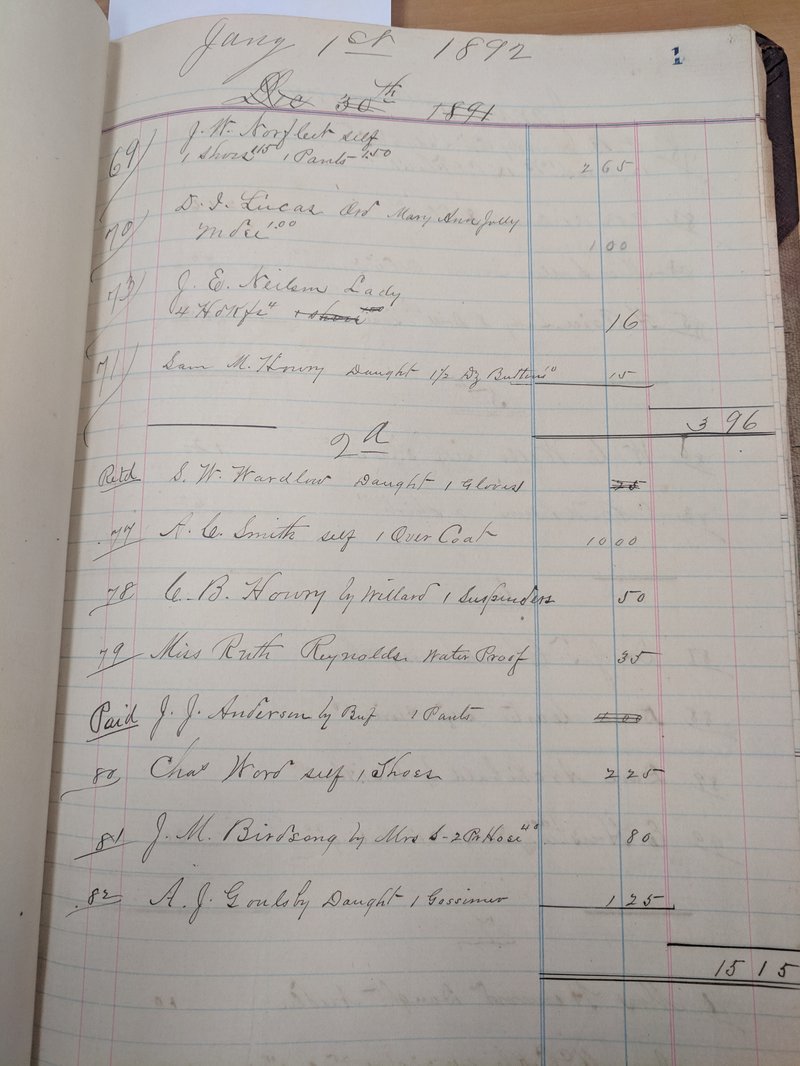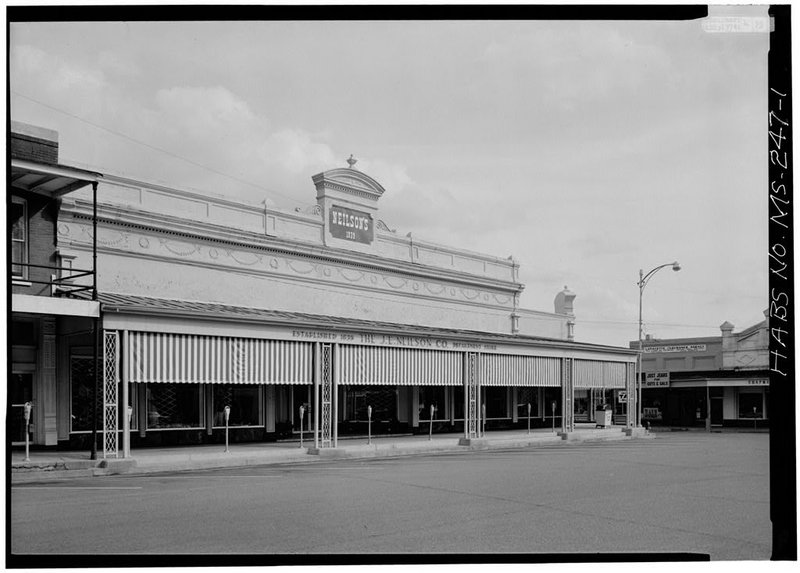Student Work
Department Stores
By: Bailey Pollack

The Evolution of Neilson’s Department Store
These are excerpts from the month of January, in the 1892 Day Book Ledger of the Neilson’s Department store present in the Special Collections and Archives at the University of Mississippi. As the name indicates, the day book was the “skeleton” of the actual accounting – the store clerk would record the name of the customer, the items, the amount of said items, and the total cost of the purchase. At the end of the day, the total of goods bought and their purchasers would be recorded in the ledger. The multiple data recorded varied day to day; however, not a day went by in January where someone did not come in to the store. Over the course of January, there were 119 total sales totaling at $205.56.[1]Adjusting for inflation, that would be around $5,425 for the month at today’s prices ($1 in 1892 is worth about $26.50 in 2018).
On average, each customer would spend about $1.73 per visit – however, customers spending habits varied greatly. Some would only buy 50 cents worth of items, while others went to pay off items or services, which could have been more than triple the average spending per visit. There were 32 purchases that were over $1.50 per customer — this shows that few people spent more than a couple of dollars per store visit. Of these 119 sales during the month, 59 of them included some sort of clothing item – the most popular items being boots and shoes, with shirts, pants, and suspenders following closely behind. The next category that was included in 17 of the 119 purchases were home-related goods – this could include combs, soaps, buttons, and yarn, hoses (a particularly popular item of this category), and other gardening equipment and tools. Also included in the ledger were payments or money transfers from the other Neilson’s location in Pickens, Mississippi. These totals were not included in the total amount for that day, but rather put in the day book for reference when the actual accounting was performed. Lastly, there are entries from members of the Neilson family themselves – both C.B. and J.E. (the son of the founder of Neilson’s,) had made purchases a few times over the course of the month.
These purchase trends show Neilson’s development as a department store – moving from a general goods store with all types of products to the clothing exclusive store that services Oxford today. As commerce has moved towards the relatively new online shopping domain, which netted around $100 billion in the fourth quarter of 2017 alone.[2] Stores like Neilson’s have had to adapt to the changing demands of the American people. The decline of the department store in general can be seen across the United States, as companies like Sears, who maintained the department store/jack-of-all-trades business practice, have begun to close hundreds of stores in the face of bankruptcy.[3] Studies did show, however, that customers continue to visit stores that give them a certain “shopping experience” – something that specialty stores like Neilson’s pride themselves on.[4]

Ledger 10, January 1, 1892 from Neilson’s Collection, Department of Archives and Special Collections, The University of Mississippi Libraries.

Ledger 10, January 13, 1892 from Neilson’s Collection, Department of Archives and Special Collections, The University of Mississippi Libraries.

Source: Library of Congress, loc.gov (in public domain)
[1]Day Book Ledger, January 1892, Neilson Collection (Ledger #10, pages 1-10), Department of Archives and Special Collections, The University of Mississippi Libraries.
[2]“U.S. Retail E-commerce Spending 2017 | Statistic.” Statista. Accessed January 08, 2019. https://www.statista.com/statistics/276387/quarterly-us-retail-e-commerce-spending/.
[3]Rumore, Kori. “Rise and Fall of Chicago Icon: 132 Years of Sears.” Chicago Tribune. October 15, 2018. Accessed January 08, 2019. https://www.chicagotribune.com/news/ct-sears-company-history-timeline-htmlstory.html.
[4]Danziger, Pamela N. “What The Latest Retail Sales Trends Reveal About American Shoppers.” Forbes. July 17, 2017. Accessed January 08, 2019. https://www.forbes.com/sites/pamdanziger/2017/07/15/what-the-latest-retail-sales-trends-reveal-about-american-shoppers/#554f0aa05c53.
